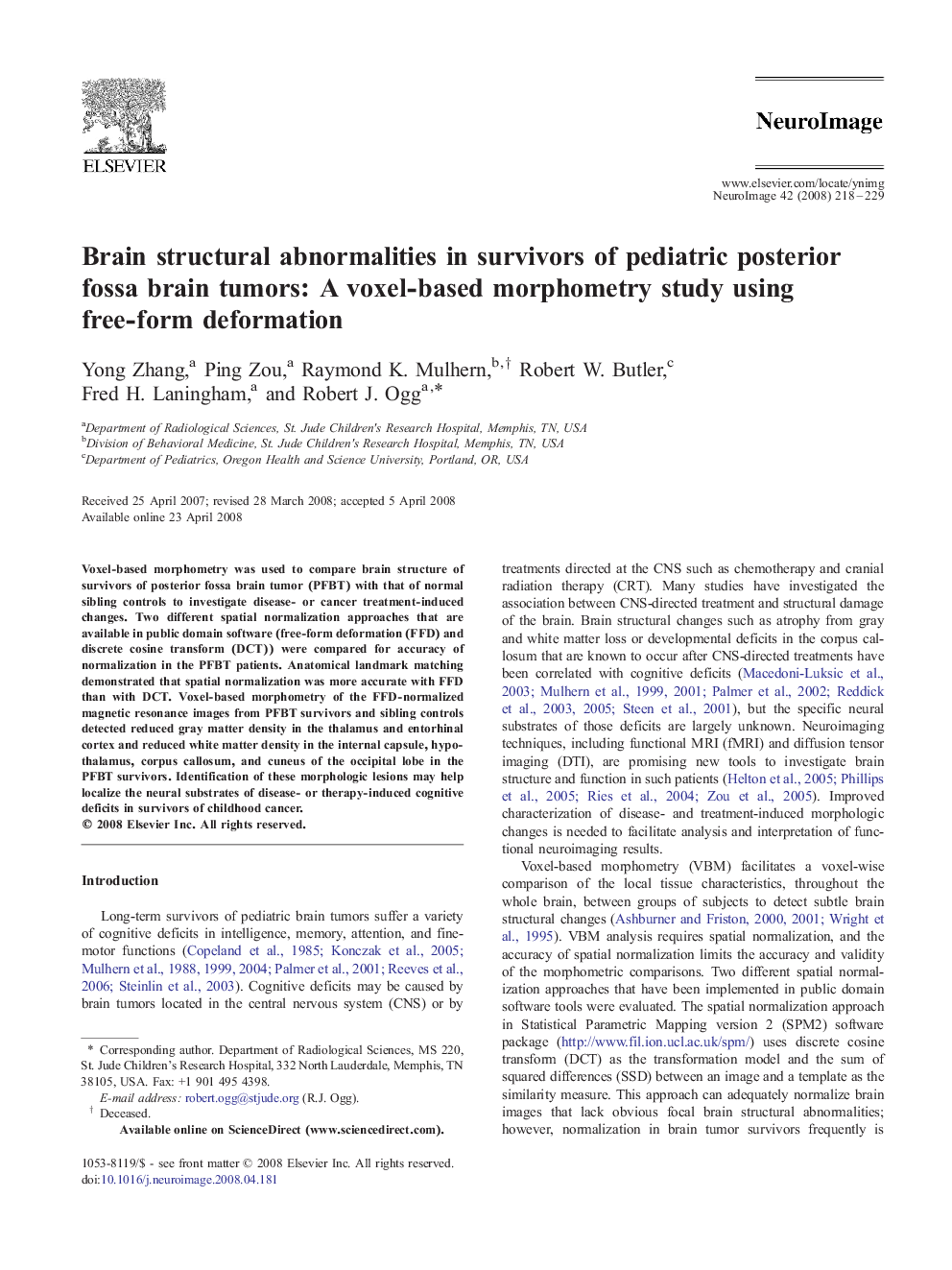| کد مقاله | کد نشریه | سال انتشار | مقاله انگلیسی | نسخه تمام متن |
|---|---|---|---|---|
| 3073026 | 1188820 | 2008 | 12 صفحه PDF | دانلود رایگان |

Voxel-based morphometry was used to compare brain structure of survivors of posterior fossa brain tumor (PFBT) with that of normal sibling controls to investigate disease- or cancer treatment-induced changes. Two different spatial normalization approaches that are available in public domain software (free-form deformation (FFD) and discrete cosine transform (DCT)) were compared for accuracy of normalization in the PFBT patients. Anatomical landmark matching demonstrated that spatial normalization was more accurate with FFD than with DCT. Voxel-based morphometry of the FFD-normalized magnetic resonance images from PFBT survivors and sibling controls detected reduced gray matter density in the thalamus and entorhinal cortex and reduced white matter density in the internal capsule, hypothalamus, corpus callosum, and cuneus of the occipital lobe in the PFBT survivors. Identification of these morphologic lesions may help localize the neural substrates of disease- or therapy-induced cognitive deficits in survivors of childhood cancer.
Journal: NeuroImage - Volume 42, Issue 1, 1 August 2008, Pages 218–229